The San Jose Sharks used the same game roster in consecutive wins this week over the Los Angeles Kings and Edmonton Oilers. A look at the roster tells a very interesting story about how Sharks general manager Doug Wilson has constructed the team.
Sharks’ Game Day Rosters
For these two games, the Sharks dressed the same 20 players. I counted four ways the 20 Sharks players were brought into the organization and a fifth important way which made no contribution at all.
Drafted players (6): Logan Couture (Rd. 1), Timo Meier (1), Tomas Hertl (1), Kevin Labanc (6), Joe Pavelski (7), Joakim Ryan (7)
Trade (6): Joe Thornton, Brent Burns, Erik Karlsson, Evander Kane, Martin Jones, Brenden Dillon
European free agents (Efa6): Marcus Sorensen, Tim Heed, Joonas Donskoi, Melker Karlsson, Radim Simek, Lukas Radil
North American free agents (NAfa-2): Barclay Goodrow, Aaron Dell
NHL free agents (0):
By Position:
Forward: Draft – 5; Efa – 4; Trade – 2; NAfa – 1
Defense: Trade – 3; Efa – 2; Draft – 1
Goalie: Trade – 1; NAfa – 1
Doug Wilson Takes a Different Path
Almost every aspect of this distribution is striking in some respect. None of the Sharks joined as an NHL free agent. This is unusual as most teams have at least a few free agents acquisitions, even if they aren’t of the “splashy” variety. Historically, Wilson has been reluctant to make major moves in free agency (defenseman Paul Martin was his biggest free agent move). Still, he has made several lesser free agent signings over the years, yet the current roster has none of these players.
As we’ll observe, Wilson’s roster construction is a case study in finding a different path to success.
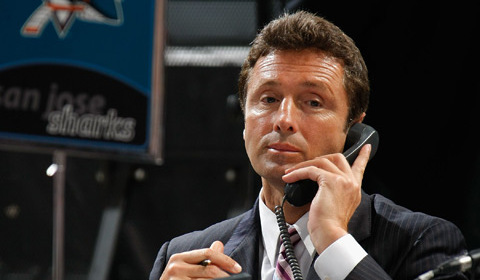
Sharks Drafts
The roster has a modest number of Sharks draft picks. It is no secret that the Sharks have rarely finished low enough in the standings to have a top-10 draft pick. So the Sharks have had to make do with a different approach to acquiring talent.
The team’s lineup in those two games featured just six of the team’s draft picks. Three were first round picks and three others were drafted in late rounds. The draft may not have provided quantity, but it has delivered quality. The three first round selections are among the Sharks’ top players, along with seventh-round selection Joe Pavelski. The injured Marc-Edouard Vlasic, not included above since he didn’t play in those games, is also among the team’s top players.
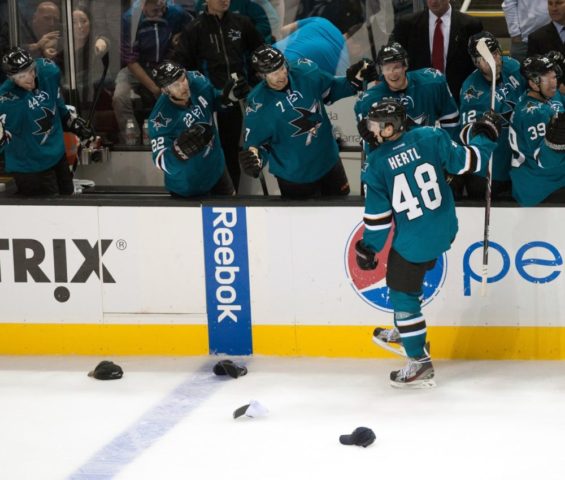
European Free Agents
The European free agents have all come over as mature players. All were at least 23 when they joined the Sharks organization. Lukas Radil is the oldest to join at age 27 and he turned 28 before the season started. Melker Karlsson and Joonas Donskoi have both earned meaningful new deals while Radil recently signed a one-year extension.
Credit the Sharks scouting staff with finding players capable of competing effectively in the NHL. But it is also important to recognize many of these players had a choice about where they’d like to play in the NHL. The Sharks have done a good job on two fronts: first finding the talent, and then recruiting the players to San Jose.
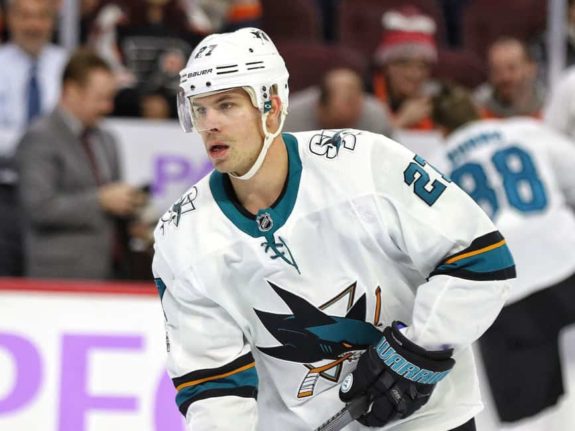
San Jose now has a positive feedback loop. With so many players having success in San Jose with this approach, others will see it as a desirable destination, making recruitment easier. Though none of the European free agents can be considered stars, several have meaningful roles.
Sharks Trades
The Sharks’ biggest stars came via trades. This includes future Hall-of-Famer Joe Thornton, the best and most important player in team history. And while his career is on the downward side, Brent Burns and Erik Karlsson are in their primes, giving the Sharks a one-two punch on the blue line which no other team can equal. Brenden Dillon, the third blueliner acquired via trade, is having a career year opposite Karlsson.
High-scoring winger Evander Kane was acquired at the trade deadline last season and signed a seven-year extension shortly after the season ended. The final trade acquisition is starting goalie Martin Jones. It is fair to say the backbone of the team came from trades.
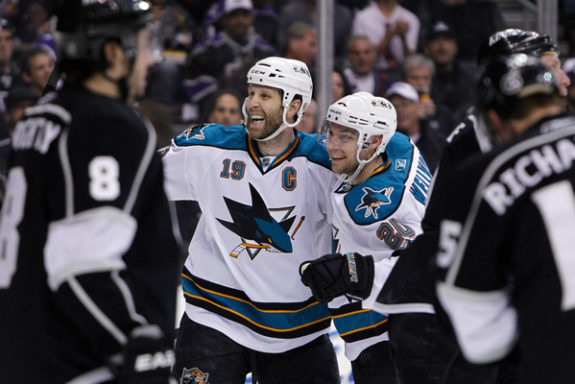
The Sharks have given up plenty of draft picks to acquire the talent in trades. The acquisitions of Kane, Karlsson, Burns and Jones all required the Sharks to part with first round picks or prospects who’d been recently drafted in the first round.
The Erik Karlsson acquisition meant trading two future high picks and four players drafted by the Sharks. The players traded to the Ottawa Senators for him included one player selected in the first round, two in the second and one in the fifth. The Sharks sent the equivalent of more than an entire draft class to acquire him.
With the exception of Karlsson, who was acquired during the 2018 preseason, each of these players acquired by the Sharks signed a long-term deal with the team.
North American Free Agents
North American free agents represent the final two roster spots. Both Barclay Goodrow and Aaron Dell have done well and earned multi-year extensions with the team. Still, this isn’t an area which has yielded a lot of players for the team.
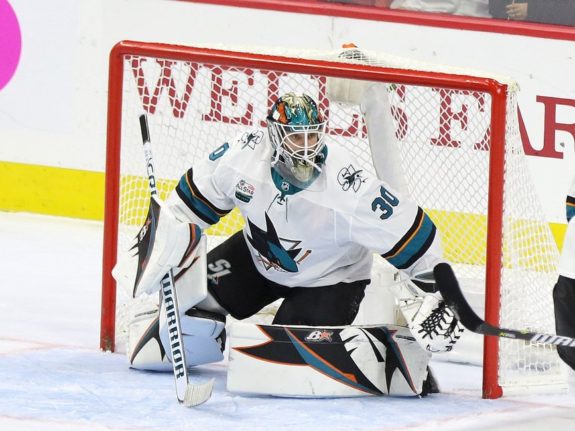
Sharks Built for Success
Some will note I glossed over a pair of injured players drafted by San Jose, Vlasic and Justin Braun. It would change the analysis a bit, but not much. Vlasic replaces Joakim Ryan, but both are Sharks draft picks so those counts remain the same. Braun replaces European free agent Tim Heed, adding a net of one draft pick and subtracting one European free agent. In other words, the composition doesn’t change much.
The Sharks have built a competitive roster in an unusual way. They’ve effectively used trades to get higher-end talent, sending a major portion of high draft picks/prospects elsewhere. Drafts have supplied a handful of key players. Instead of being active in traditional free agency involving veteran NHL players to round out the roster, the Sharks have substituted by going to Europe and signing veteran players from various leagues over there.
Wilson has shown there is more than one way to build a competitive NHL team. This season’s team sports one of league’s best records, but it is more than one season of success. In Wilson’s time with the Sharks, no other franchise can match the Sharks’ playoff appearance frequency. He deserves tremendous credit for finding ways to keep the team competitive year-after-year.
Zeke’s Notes
• The Sharks have traded many of their higher draft picks before they made it to the NHL or were very early in their NHL career. Joshua Norris, Mirco Mueller, Nikolay Goldobin, Charlie Coyle, Chris Tierney and Dylan DeMelo were all traded players whom the Sharks selected in the first or second rounds since 2012. All but Norris, who is still in college, have played on NHL teams this season.
• In the 11 drafts dating back to 2008, the Sharks have drafted both a first and second-round pick five times. They’ve selected only seven times in the first round and 10 times in the second round. Of the 17 high draft selections, three are with the Sharks. A fourth, Dylan Gambrell, played briefly for the Sharks and is with their AHL team. Three other selections remain in the Sharks pipeline. In one draft, the team’s highest selection occurred in the third round. These trends will carry forward, as future high picks were sent away in the Erik Karlsson trade.